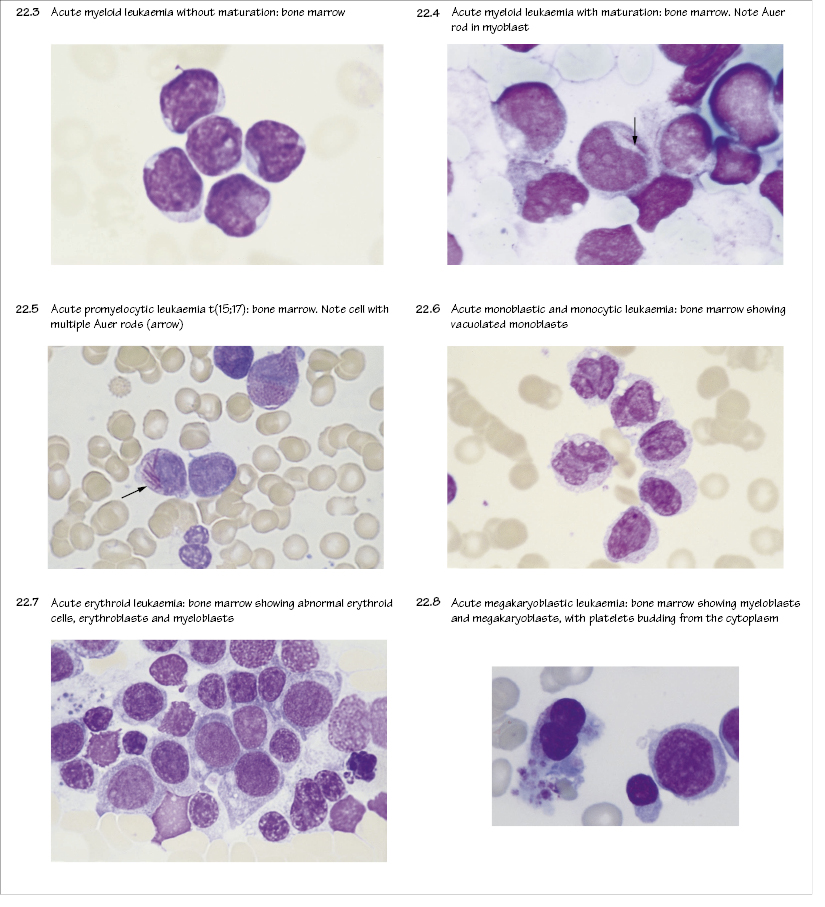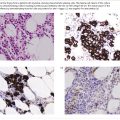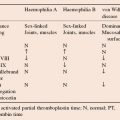
Acute leukaemia is a malignant disorder in which haemopoietic blast cells constitute >20% of bone marrow cells. The primitive cells usually also accumulate in the blood, infiltrate other tissues and cause bone marrow failure.
Classification
There are two main groups: acute lymphoblastic (ALL) and acute myeloid (myeloblastic) leukaemia (AML). Rare cases are undifferentiated or mixed. Subclassification of ALL or AML depends on morphological, immunological, cytogenetic and molecular criteria (Boxes 22.1 and 22.2; Table 22.1).
AML with recurrent cytogenetic abnormalities
AML with myelodysplasia-related features
Therapy-related myeloid neoplasms
AML with mutated NPMI or CEBPA
AML not otherwise categorized
Acute leukaemia of ambiguous lineage (undifferentiated or biphenotypic)
Precursor B-cell lymphoblastic leukaemia/lymphoma
Precursor T-cell lymphoblastic leukaemia/lymphoma
ALL, acute lymphoblastic leukaemia; AML, acute myeloid leukaemia
NB The WHO classification also includes myeloid proliferations related to Down’s syndrome which may be transient
Cytogenetic changes: (8,21), t(15,17), inversion 16
Remission after course 1 of chemotherapy is also a favourable feature
Cytogenetic changes: monosomy 5; monosomy 7; complex karyotypes, 11q 23 abnormalities
Age over 70 years is also unfavourable






